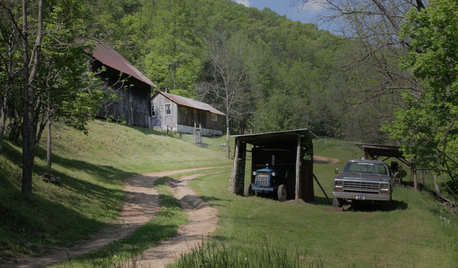Why Societies Collapse
althea_gw
19 years ago
Related Stories

SMALL SPACESLife Lessons From 10 Years of Living in 84 Square Feet
Dee Williams was looking for a richer life. She found it by moving into a very tiny house
Full Story
EARTH DAYHow to Design a Garden for Native Bees
Create a garden that not only looks beautiful but also nurtures native bees — and helps other wildlife in the process
Full Story
PETSWe Want to See the Most Creative Pet Spaces in the World
Houzz is seeking pet-friendly designs from around the globe. Get out your camera and post your photos now!
Full Story
THE HARDWORKING HOME8 Laundry Room Ideas to Watch For This Year
The Hardworking Home: A look at the most popular laundry photos in 2014 hints that dog beds, drying racks and stackable units will be key
Full Story
FARM YOUR YARDHello, Honey: Beekeeping Anywhere for Fun, Food and Good Deeds
We need pollinators, and they increasingly need us too. Here, why and how to be a bee friend
Full Story
KITCHEN CABINETSChoosing New Cabinets? Here’s What to Know Before You Shop
Get the scoop on kitchen and bathroom cabinet materials and construction methods to understand your options
Full Story
TASTEMAKERSNew Series to Give a Glimpse of Life ‘Unplugged’
See what happens when city dwellers relocate to off-the-grid homes in a new show premiering July 29. Tell us: Could you pack up urban life?
Full Story
BUDGETING YOUR PROJECTConstruction Contracts: What Are General Conditions?
Here’s what you should know about these behind-the-scenes costs and why your contractor bills for them
Full Story
ORGANIZING8 Incredibly Clever Organizing Tricks
A tension rod under the sink; wire and nails in the closet ... these storage and organizing ideas are budget friendly to the max
Full Story
LAUNDRY ROOMSKey Measurements for a Dream Laundry Room
Get the layout dimensions that will help you wash and fold — and maybe do much more — comfortably and efficiently
Full StorySponsored



althea_gwOriginal Author
ericwi
Related Discussions
Article on Colony Collapse Disorder
Q
Collapse by Jared Diamond
Q
repair my collapsed closet rods
Q
1874 stone house mysteriously collapses.
Q
steve2416
ericwi
Monte_ND_Z3
marshallz10
vgkg Z-7 Va
althea_gwOriginal Author
althea_gwOriginal Author
kingturtle
althea_gwOriginal Author
kingturtle
althea_gwOriginal Author
kingturtle
kingturtle
marshallz10
althea_gwOriginal Author
kingturtle
marshallz10
althea_gwOriginal Author
pnbrown
marshallz10
kingturtle
pnbrown
althea_gwOriginal Author
kingturtle
althea_gwOriginal Author
kingturtle
pnbrown
kingturtle
marshallz10
wayne_5 zone 6a Central Indiana
althea_gwOriginal Author
kingturtle
althea_gwOriginal Author
pnbrown
kingturtle
althea_gwOriginal Author
kingturtle
wayne_5 zone 6a Central Indiana